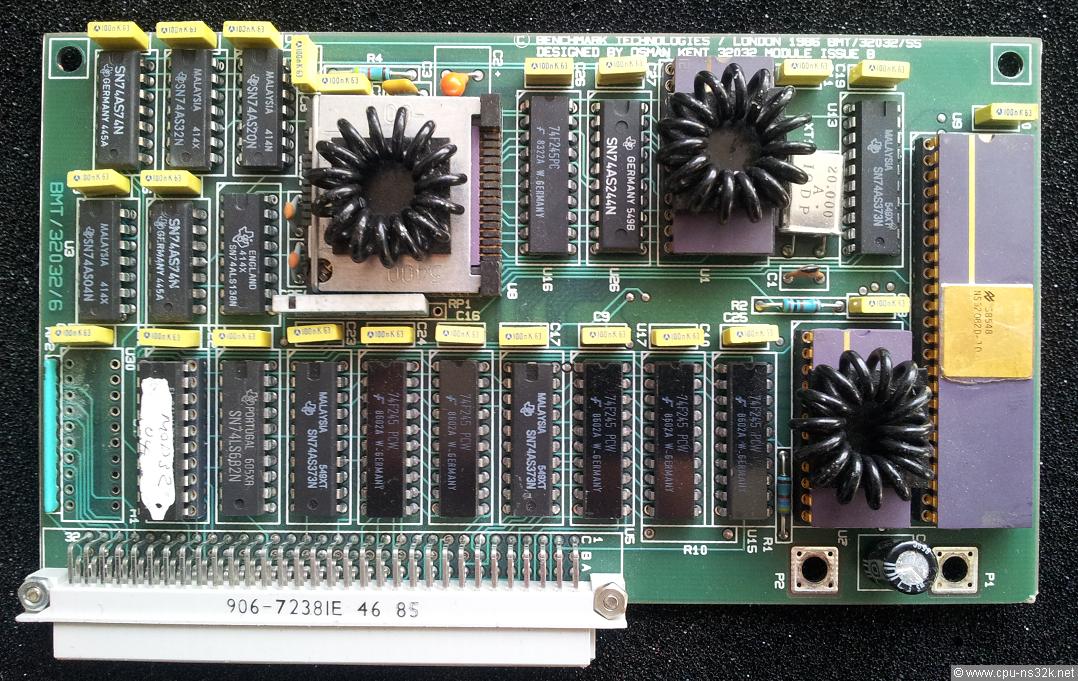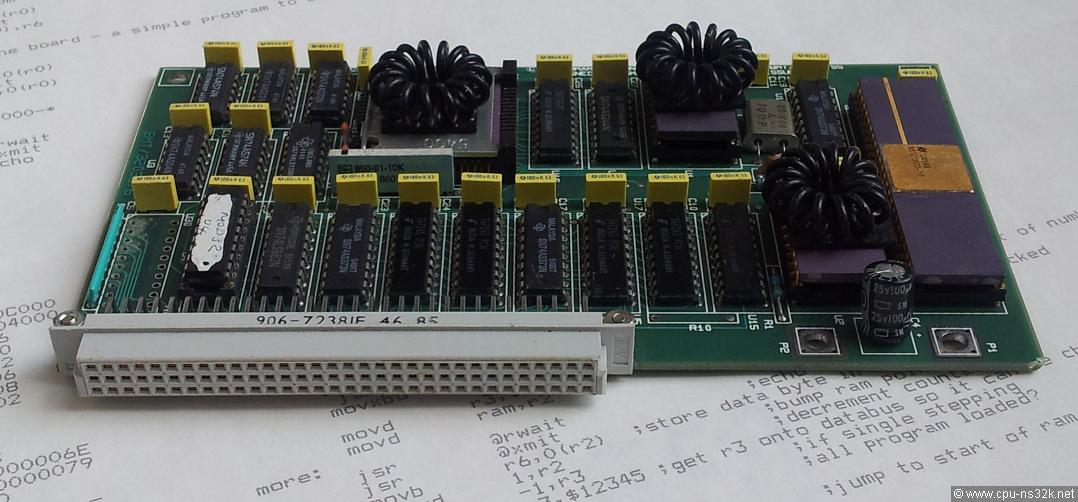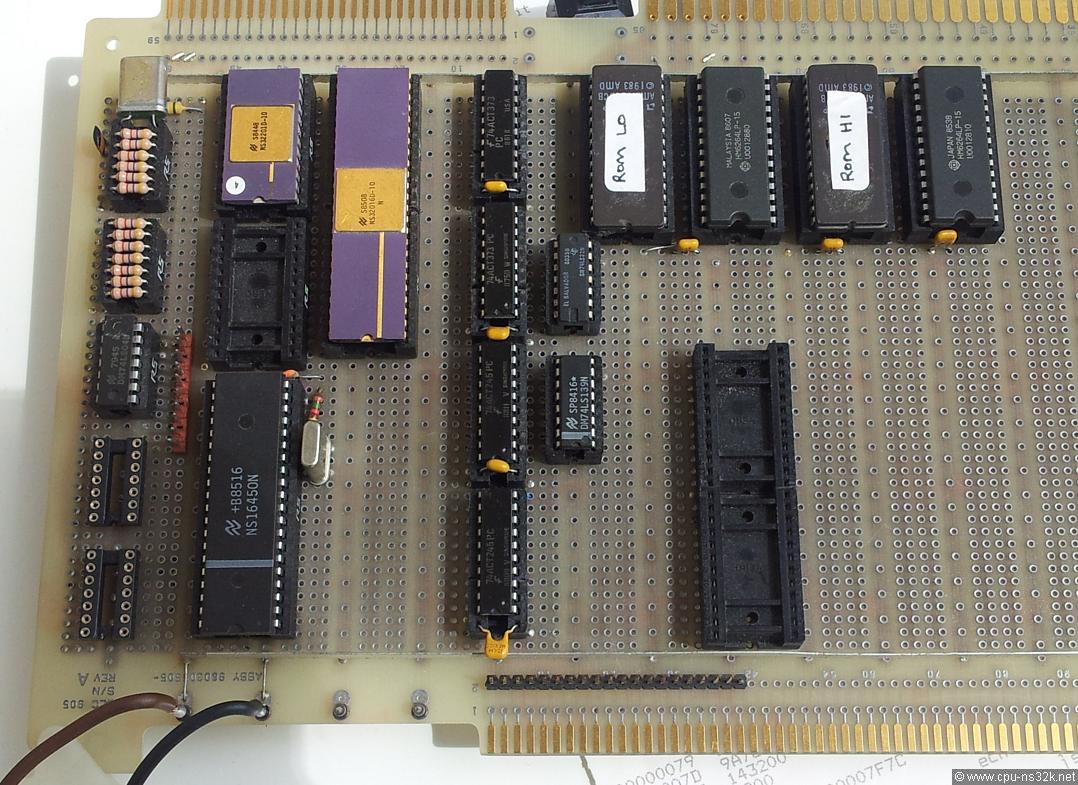Gary
Gary wrote about himself:
"I worked for National Semiconductor from 1982 to 1986 at their site in Greenock Scotland. It was my first job out of University and I have happy memories of the company and my Scottish colleagues. My job involved the testing of microprocessors. During 1985 I was working at Nationals headquarters in Santa Clara California. During my time there I did some work to characterize how the NS32016 operated over an extended temperature range. For the historians, the 32000 family was tested on the GenRad GR16 VLSI tester, a leading tester at this time. I heard rumours that the 32016 might be used in a future Atari computer, however with hindsight we now know that Atari chose the Motorola 68000. Que peccato!"
The board in Figure 1 is one of Gary's souvenirs to Series 32000. It is a CPU-only board based on the NS32032 CPU without any memories and peripherals. Therefore it must be part of something bigger. Gary and I had no clue where it was put in. Searching for benchmark Technologies in the web was not successful. According to the term LONDON it should be a british company.

Fig. 1. NS32032 CPU-only board from benchmark Technologies.
But maybe the designer of the board could help. It's unusual that his name, Osman Kent, is printed on the board. In Spring 2016 Gary found him in LinkedIn. Osman Kent is today president of Numecent, a software company.
I wrote him an email and he answered quick and kindly. He was a co-founder of benchmark Technologies and became her CTO. They had a product called benchmark 32 which was a CPU-independant UNIX workstation engine. 32032 was one of the first modules they made, followed by the 32332. They also had Motorola 68020 and Fairchild Clipper modules. The idea was that you could have the same baseboard, with a separate IO processor (Intel 80186 based) and change the modules as the market conditions dictated. It was a successful product for them.
It is interesting to see the further destiny of Benchmark Technologies. They became DuPont Pixel Systems which then became 3Dlabs (CEO Osman Kent) which was a $1B company on Nasdaq. Finally 3Dlabs was bought by Intel and the very original people of benchmark days are still with Intel.

Fig. 2. Another view of Gary's NS32032 board. The heatsinks look like crowns.
The three black spirals are heatsinks. They are placed on top of the NS32032 CPU (top left), the NS32201 TCU (top right) and the NS32081 FPU (bottom). The TCU is recognizable because of the 20 MHz quartz placed very closely. The NS32082 MMU seems to have lost its heatsink. One PAL can be found in the lower left corner.
The system connector is a standard 96-pin DIN connector. It should be possible to find out the pin usage, build an adapter and see wether the 30 year old board is still functional. Gary has started this job in July 2016. He connected the board to a power supply and noticed a current consumption of 2 A which is in my opinion not too much for all the NMOS and bipolar devices. He draws also a first schematic which can be found here:
Benchmark Technologies Board Schematic
Gary has started working on a NS32016 CPU wire wrap board in 1987. He calls the board "The Force". Progress is low since many other things came into focus. But he has moved the dust away on it and will finish it. Figure 3 shows the board in May 2015.

Fig. 3. "The Force" with lot of space for extensions.
The schematic of the board is available: "The Force" schematic. There you find the NS32081 FPU drawn in. On the board the socket left to the CPU is still empty.
This chapter was last modified on 16 July 2016. Next chapter: Gilbert